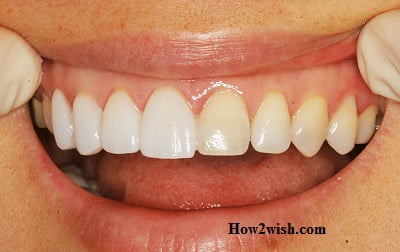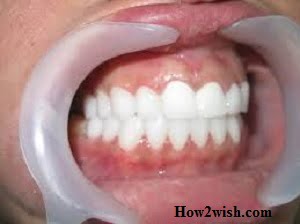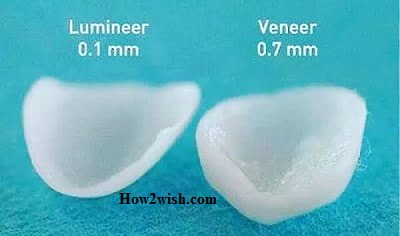Today We are exploring The Differences Between Lumineers and Veneers. Dentists have at their disposal enough technologies, materials, and tools to create a “Hollywood” smile in just a few visits to the clinic. The cost of such services depends on the complexity of the diagnosed defects and anomalies in the development of the dentition, but in the end, it pays off with the result achieved. Among the options offered within the framework of aesthetic prosthetics is the installation of thin ceramic plates that improve the appearance of incisors and strengthen their structure. However, before making the final choice, it is worth knowing better what is the difference between the onlays, and what is better for the teeth – Lumineers and Veneers.

General view
The classification used in dental orthopedics refers to the products in question in the category of micro prostheses. From a technical point of view, they are similar to each other – the difference lies in the details that are important in achieving the desired result.
For veneering, orthopedic plates have been used that repeat the anatomical structure of problem units and are fixed on the vestibular surface. For fixing, a special cement is used, which is characterized by high adhesive properties, which do not allow removing the elements without the help of a doctor. Thin onlays are formed from pressed ceramic, porcelain, and zirconium dioxide, or from a composite material that is applied to the enamel by a direct method – directly in the oral cavity. The result is the masking of visually noticeable defects, including small curvatures, chips and cracks, interdental gaps, and pigmented areas.
The main difference between lumineers and veneers is the thickness of the structure. In fact, these are the same plates, but made according to the patent of the American company Cerinate, according to which the ceramic layer should not exceed 0.3 mm. The rest of the technology remains unchanged – the overlays are glued to the incisors, aligning their shape and shade, and preventing further destruction.
There is another type of micro prostheses, the authorship of which belongs to Russian specialists – ultrasonics. The concept is also based on the classic version but offers improved technical characteristics, achieved through the use of digital modeling methods and the choice of E.Max pressed ceramic as a material.
Indications for prosthetics
Among the factors that determine the expediency of orthopedic correction according to the method under consideration, first of all, is the desire of the patient to restore and maintain an attractive and healthy smile. Microprosthetics help in solving a wide range of problems, including:
- Correction of the shade of enamel that has undergone changes as a result of pathological development, the influence of natural age processes, as well as the abuse of bad habits, including smoking and the use of products containing aggressive dyes.
- Protection of crowns from destruction, which can be provoked by excessive mechanical load against the background of existing cracks and chips.
- Closure of tremas and diastemas – visually noticeable gaps between teeth not only violate the aesthetics but also increase the likelihood of infection of periodontal tissues.
- Correction of abnormal development of individual elements of the series, characterized by crowding, rotation, or curvature of the alveolar position.
It should be noted that choosing lumineers and veneers, and studying the recommendations of specialists, should be done only after undergoing a comprehensive diagnosis. Microprostheses help in correcting small defects, however, in the presence of serious anomalies and bite problems, additional orthodontic treatment is likely to be required, and in severe cases, extraction and subsequent implantation are prescribed.
Main differences between Lumineers and Veneers
Let’s make a reservation right away – each of the options under consideration, subject to the standard protocol, allows you to get the desired result in the form of an even and snow-white smile. To better understand how differ from Lumineers and Veneers, we present the main theses in the table:
At first glance, the second option seems like a more promising investment, but keep in mind that the cost of manufacturing and installation will be higher. In addition, you will have to wait longer for original products, since Cerinate’s manufacturing facilities are located in the United States. However, analogs from domestic developers are also presented on the market, which increases the range of available options both from a functional and financial point of view.
Criterion Veneering Lumineers
Plate thickness 0.5-1.2mm Up to 0.3 mm
Enamel preparation Deep Minimum
Service life About 10 years Up to 20 years old
Operation reversibility No Yes
Features of veneers
The “progenitor” of all modern micro prostheses, becoming thinner with each new iteration, are classic ceramic or porcelain plates. As part of the aesthetic restoration, composite modeling is also used, recommended for therapeutic purposes. These overlays are formed in one visit to the clinic, without requiring a long wait, while the usual protocol includes at least two visits to the dentist.

The procedure for installing micro prostheses is considered quite gentle, which makes it popular in orthopedics. Grinding is performed under local anesthesia, so the only risk that arises during the preparatory phase is a temporary increase in sensitivity to temperature changes, as well as susceptibility to mechanical pressure that occurs during chewing. Before choosing a technique, the patient is necessarily informed about the irreversibility of the results – after the enamel is processed, the tooth loses its original shape, and if the plate is removed, it does not look very attractive.
Varieties
Within the classification, several types of veneers are distinguished:
- Therapeutic models are created from a composite composition, also used to form fillings that cover carious cavities. They differ in the minimum duration of production, allowing you to perform all the necessary actions in one session. The decision to apply a protective aesthetic coating is made after assessing the condition of the dentition and is implemented in the absence of pronounced pathological processes. If caries is detected, you will first need to undergo a dental solution.
- Orthopedic – full-fledged overlays, usually implied when it comes to veneers. They are distinguished by a strong and reliable structure, long service life, and manufacturing, which is due to the laboratory processing of data obtained during the survey, as well as the use of complex technical devices for working with workpieces.
Installation order
Veneering is implemented according to a standard algorithm that provides for the following sequence of actions:
- Sanitation of the oral cavity and relief of inflammatory processes.
- Anesthesia of the area of medical intervention.
- Removal of a layer of enamel, not exceeding a thickness of 0.7 mm.
- Formation of an impression of the dentition for transfer to a technical laboratory.
- Creation of a plaster model and design of overlays.
- Verification of dimensions, configuration, and shade of products.
- Fixation with tightness control.
Taking into account the fact that laboratory production takes up to 2-3 weeks, temporary plates are installed for this period, allowing the patient not to worry about his appearance. The final installation on the anterior incisors is done with dental cement, the excess of which is removed. After cementing, strength testing is carried out, excluding arbitrary displacement during the adaptation period.
Advantages and disadvantages of veneers
The positive aspects that distinguish classical models include:
- Possibility of quick aesthetic restoration.
- Strength and reliability of micro-prostheses resistant to stress.
- Affordable, in comparison with analogs, the cost of installation.
- Individual selection of the color shade corresponding to the enamel.
Of the minuses, it is worth highlighting the limitations due to which prosthetics can be delayed or excluded. Vining is carried out only in cases where the defects of the teeth are not expressed in a severe form, and also if there are no pathological anomalies in the diagnosis, such as bruxism, increased abrasion, or sensitivity of the enamel layer.
Features of Lumineers
An alternative was developed to improve the underlying technology and turned out to be a really good solution. Today, most popular foreign artists, actors, and politicians shine with their smiles thanks not only to genetics and competent hygienic care but also to dental intervention, which provides a dazzling and natural whiteness. The minimum thickness of the overlays makes it possible to do without deep preparation of the coating, and the special processing of the material gives it an appearance indistinguishable from natural.
Varieties and installation procedure
Lumineers have been patented by Cerinate, but there are other options on the market that are technically similar to the original model. The prosthetic protocol is similar to veneer – the main difference here is the amount of enamel removed, which has undergone destructive changes or has suffered from pathological manifestations.
Advantages and disadvantages
Luminous onlays are installed in one session and are usually used as part of the aesthetic restoration, the main purpose of which is to whiten teeth. For fixation, a mineral-based adhesive composition is used, which helps to strengthen the structure of dental tissue, as well as restore the relief of cracked areas and roughness. The declared duration of the operation is 20 years, while the materials used for manufacturing exclude the possibility of discomfort or an allergic reaction in the patient. In addition, the tight contact of the plates with the base prevents food particles and pathogenic microbes from getting inside and provides protection from damage.
Help in choosing Lumineers and Veneers
The planning of a dental intervention should be based on the results of a preliminary diagnosis. One of the important aspects that help in making a decision, in addition to finding out what is more expensive in price – Lumineers and Veneers, and what is the difference between them, is photo-visualization, which is created using modern digital processing technologies. The patient can immediately see how his smile will change after an aesthetic restoration, which shade will best suit the complexion and lip contour, and how much the overall impression made on others will improve.
Installation Disadvantages Lumineers and Veneers
Like any other medical procedure, Lumineers and Veneers have certain limitations, which are revealed at the preliminary examination stage. Aspects requiring special attention include:
- The fragility of the structure. Ceramic and zirconia plates are strong enough to handle common food products. However, those who are involved in contact sports or martial arts, or by the nature of their activity, regularly face the threat of receiving blows to the jaw region, so it is worth considering the advisability of choosing in favor of the technique in question.
- Massiveness. If the anatomical features of the development of the dentition are characterized by a large form of elements or a narrowing of the jaw arch, standard products may look unnatural, nullifying all efforts to restore the aesthetics of a smile. The solution to this is orthodontic correction or surgery.
- Price. In both cases, we are talking about a rather expensive procedure, the costs of which are higher than the manufacture and installation of conventional artificial crowns.
Medical contraindications. Bruxism, TMJ pathologies, abnormally thin enamel coating, the presence of a large number of fillings, and extensive caries are all factors that do not allow installing Lumineers and Veneers at the first visit to the clinic.

Restoration Coating of teeth – What is an artistic or cosmetic restoration
The desire to become the owner of a luxurious and snow-white smile is quite natural for every person, however, in order to avoid negative consequences, it should be compared in advance with the available opportunities.
The estimated cost of Lumineers and Veneers
The final tariff for micro-prosthetics consists of a number of indicators. By default, thinner overlays are more expensive, since the originals are made and shipped from the USA, and require more careful processing of raw materials. On average, the price for installing ceramic veneers varies in the range of 29-35 thousand rubles, composite veneers will cost 20-25,000, and Cerinate lumineers – from 65 thousand rubles. and higher. To clarify the prices, as well as undergo an initial diagnosis by a qualified doctor, make an appointment at the Dentika clinic, which offers a wide range of dental services.
Service life difference
From the point of view of the duration of operation, traditional models are considered less reliable, which is due to not-so-tight contact with the base. Insufficient fit, combined with non-compliance with medical prescriptions for hygienic oral care, increases the risk of developing caries and inflammatory processes. Particular attention should be paid to the material of manufacture and fixation – the most durable option is zirconium dioxide, fixed with a mineral-based adhesive.
How to care for veneers
The protocol for prosthetics does not provide for specific procedures, however, the usual cleaning and rinsing should be performed at least twice a day. Many doctors advise buying a portable irrigator – a device that delivers an airborne mixture under pressure, thanks to which the smallest particles and food fibers are removed. In addition, it is recommended to exclude or minimize the presence in the diet of foods and drinks containing aggressive dyes, as well as completely stop smoking.
Summing up
The main selection criterion is the characteristics that are required from micro prostheses. With a conditional comparison, which determines what will be better for the teeth – composite Lumineers and Veneers – there will be many differences (from cost to speed of the procedure). The best option is to get advice from a qualified specialist who will talk about the advantages and disadvantages of each of the available options.